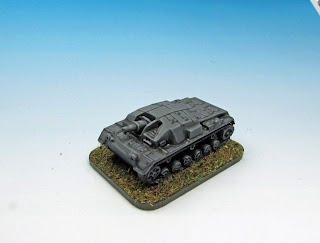ALTHOUGH it was latterly famous as a tank hunter, the StuG began life as an assault gun; providing direct-fire support to infantry attacking defended positions. The concept was birthed in the trench warfare of the First World War, where it had been noted that Stoßtruppen lacked the firepower to tackle fortified strongpoints. (Then) Colonel Erich von Manstein was a major advocate of the concept of Sturmartillerie ("assault artillery"), that is light artillery pieces that could advance alongside infantry on tracked platforms, and promoted it to his superiors. A June 1936 memorandum by the 2nd Department of the General Staff of the Army defined the use of such a weapon as thus: 'The task of the Stumartillerie is to destroy enemy machine-gun (MG) positions. This task will be performed within the scope of the infantry attack and at firing ranges of maximum 4km. Thus it is a weapon of the infantry and does not have to perform artillery duties. Therefore, there is no need for shooting ranges of 7 km or being fitted with indirect sighting devices.' That same month the Heereswaffenamt tasked Daimler-Benz AG and Krupp with creating a prototype based on these stipulations. Daimler AG used the chassis and other components from the new Panzer III Ausf.B and Krupp provided the short-barreled 75mm StuK 37 L/24. The resulting prototypes met with approval. Following some modifications, between January and May 1940 36 production models were produced by Alkett - titled the Sturmgeschutz III Ausf A. These retained the main armament, but were based upon the Panzer III Ausf.F chassis, with the frontal armor increased to 50mm and the sides 30mm - making it the most heavily-armoured German tank at the time. Interestingly the prototypes were open-topped, a vulnerability that had been addressed by the time it reached production. There was no secondary weapon, so the vehicles were entirely reliant on infantry to protect their flanks. Twenty-four Ausf As were issued to Sturmartillerie Batteries 640, 659, 660 and 665 in time to see service during the French Campaign. Each battery was comprised of three platoons, each equipped with six vehicles. Feedback from the front was favourable and the model's future assured. Miniature is from Pithead Miniatures.

